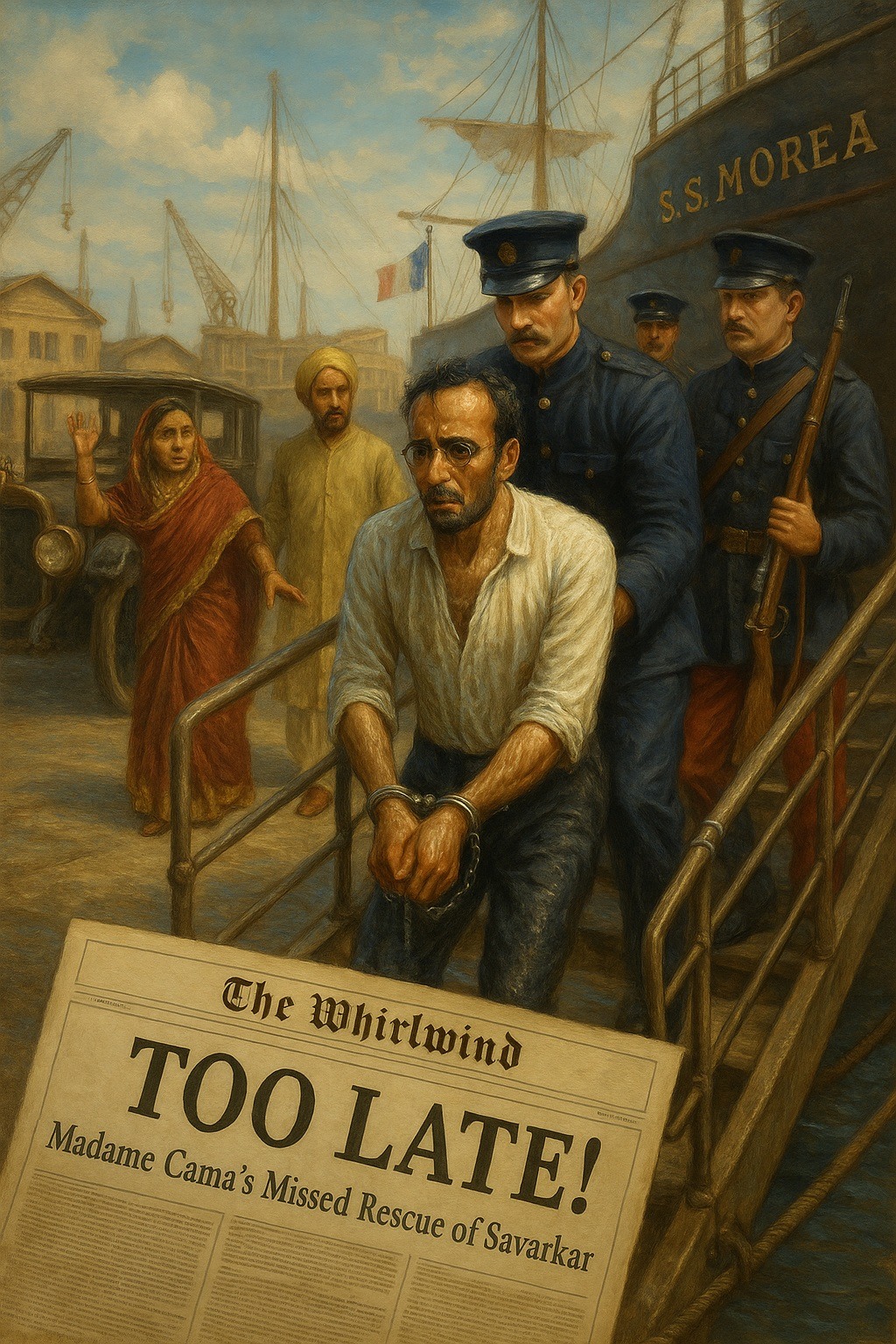The dramatic escape of Vinayak Damodar (Veer) Savarkar at the port of Marseilles in July 1910 remains one of the most notable episodes of India’s revolutionary struggle. Under strict British custody, Savarkar attempted a daring flight through the porthole of the docked S.S. Morea, swimming through the harbor waters to set foot on French soil. His primary strategy was to reach France to mount a legal challenge in the country, arguing that as a political prisoner Savarkar could not be extradited under French law. If that did not work out, Savarkar hoped to get at least rescued by other Indian freedom fighters or international revolutionaries supportive of the Indian cause. For a brief moment, freedom appeared to be possible.
Conflicting Narratives of the Rescue Attempt
According to historian Vikram Sampath, “There is, however, very little corroborative evidence to suggest that any Indian revolutionaries were present on the site, and multiple narratives of the episode abound.” Some historical accounts nevertheless suggest that key revolutionaries – Madame Bhikaji Cama, Mandayam Parthasarathi Aiyar, and Virendranath Chattopadhyay—were nearby and intended to aid his rescue. Yet they arrived too late. Whether delayed by something as mundane as a closed railway crossing or a social diversion, their timing proved disastrous. By the time they reached Marseilles, Savarkar had already been overpowered and recaptured by British guards and dragged back aboard the vessel.
Security Measures in Marseilles
Even if Madame Cama and her comrades had arrived on time, success would have been uncertain. The British had already alerted the French Sûreté, and security forces in Marseilles were placed on high alert under direct orders from both London and Paris. With a British directive in place and French police instructed to prevent an escape “at all costs,” any attempt to liberate Savarkar would have faced formidable – if not insurmountable – obstacles.
Savarkar’s Own Reflection
Later, Savarkar himself reflected on the episode with a sense of bitterness tinged with irony:
“Madam Cama and Aiyar, who had planned to rescue me, arrived in Marseilles by car a few hours late. They must have cursed themselves when they heard that I was captured after my dramatic escape.”
Final Thoughts – Historical Significance
This episode illustrates the narrow margins on which revolutionary history often turns. Had circumstances aligned differently—had Madame Cama arrived earlier or had the legal strategy been successfully executed—the trajectory of his life and, potentially, aspects of the Indian independence movement might have been altered. Instead, the delay ensured his return to British custody, leading to extradition to India and two life sentences of transportation to the Cellular Jail in the Andamans.
💭 What do you think? Do you think Savarkar’s escape at Marseilles could have changed the course of India’s revolutionary struggle if it had succeeded? Madame Cama, Aiyar, and others were key figures of the Indian revolutionary movement abroad. In your opinion, are their contributions sufficiently remembered today? The British and French governments coordinated closely to prevent Savarkar’s escape. What does this reveal about the international dimension of India’s freedom struggle? If Savarkar had gained asylum in France in 1910, how might his political and social ideas have evolved differently?
👉 Share your thoughts in the comments below!
Sources:
SAMPATH, Vikram. 2019. Savarkar (Part 1). Echoes from a forgotten past. 1883-1924.Penguin Random House India: Gurgaon.
SAVARKAR, Vinayak Damodar. 1965. Last Press Interview, conducted by Shridhar Telkar. [originally published by the weekly ORGANISER and appeared in the Diwali number 1965]; reprinted in Savarkar. Commemoration Volume. Savarkar Darshan Pratishthan (Trust), edited by Sudhir Phadke, B.M. Purandare, Bindumadhav Joshi. February 26, 1989.


Leave a Reply